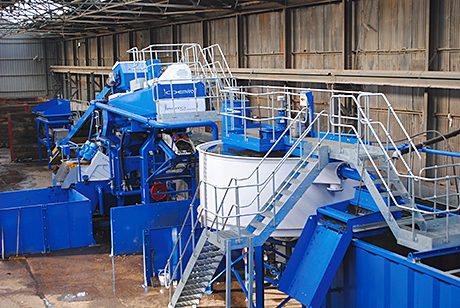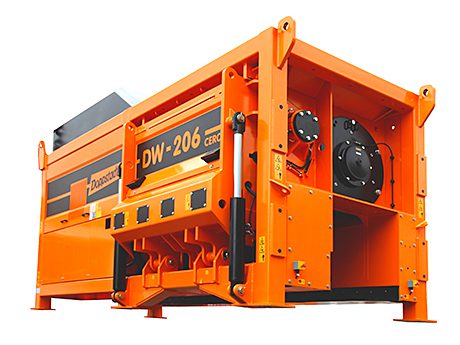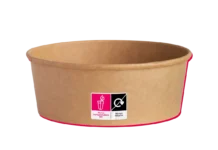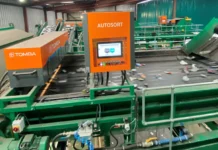Road grit and gully waste usually end up in landfill, at least in the UK. But a scheme adopted by Warwickshire County Council illustrates how this material can be recycled, with surprising benefits to both the surrounding environment and local authority coffers. Peter Craven of CDEnviro explains

EACH year, some two million tonnes of grit and salt are spread onto our roads at a conservative annual cost of over £150 million.
This is vital to keep the UK’s road network open and ice free during the depths of winter. Even in the height of summer, grit and finer sand are occasionally spread onto some roads to prevent them from melting. This mixture of aggregates and salt usually has a pinkish tinge and settles undisturbed in road side gullies; ultimately being washed into the drains; and then is typically removed by road sweepers. The majority of this waste product has invariably, until now, then been sent to landfill.
Using efficient and environmental plant, with its low carbon technology and hybrid fuel systems to do this work, only to then see the resulting spoil disposed of in such a way is a travesty, particularly with Landfill Tax high and set to escalate to £80 per tonne by April 2014, with possible future rises to come. This places increased pressure on Local Authorities and Borough Councils to find additional funds to pay for the equipment and also to replace stocks – and the cycle is perpetuated year-on-year. In recent years we’ve also struggled to secure adequate supplies of grit and salt to meet demand. Only now are Local Authorities realising that they are effectively sitting on a potentially sustainable product, and are beginning to find the impetus to exploit it!
In comparison, many European countries now recycle road grit, remixing it with new salt, as required, ready for re‑use. However, in the UK the true size of this potential resource is actually unknown. The public sector agency responsible has not released statistics on the volumes of road sweepings or gully waste being recovered. If all of the UK’s 326 locally governed districts applied a little joined up thinking, a more productive recycling initiative could be easily achieved.
With recycling technology now available in the UK to process this material, anything up to 90% of the waste collected could be recycled and reused as a valuable resource as all the constituent parts have value. Whilst the saline constituent is dissolved and washed out, the grit and aggregate material that remains is reclaimable. This means stocks of virgin aggregates can be protected, something we should be seriously working towards in light of the UK quarry slowdown, and means we can re-use this valuable resource, potentially many times over.

What’s in it?
Up to 60% of the total volume of raw, untreated gully waste is water and it’s ludicrous that this is sent to landfill. Sand or grit makes up 50% of the overall material recovered when gully waste and road sweepings are washed and dewatered. From the same material larger aggregate constitutes approximately 40% of the total which when washed and scrubbed, produce a clean and reusable material. The remaining 10% is typically organic matter along with other lightweight waste like ferrous material and general litter which, when removed, may be composted or, at worst, sent to landfill.
Leicestershire Borough and District Councils reported that approximately 8,050 tonnes of its road sweepings are collected each year, all of which goes to landfill. If an average of just 4,000 tonnes was collected across the remaining 92 counties in the UK, we can estimate that a conservative 372,000 tonnes of material potentially goes to landfill each year and the figure could be significantly higher. At a cost of £80 per tonne, this currently equates to a massive £29.76 million for disposal alone. The collection, distribution and original purchase costs also need to be factored in.
Like many local authorities, Warwickshire County Council was previously sending its road sweepings to landfill but the spiralling cost of doing so was becoming prohibitive. In researching alternative treatment techniques, CDEnviro presented this public sector authority with a waste materials and recycling solution that was beneficial, not just to the locality and surrounding areas but also financially. The result was a multi-million pound investment in a state-of-the-art processing facility in Wolverhampton.
By successfully embracing the technology and working in partnership with six waste disposal agencies, including SITA UK which operates the road sweepings and gully waste recycling facility, Warwickshire County Council has taken recycling to the next level. This 15 tonne per hour road processing plant incorporates a full water treatment system, designed and commissioned by CDEnviro, along with a newly designed feed hopper and a high attrition system specifically designed to handle this heavily contaminated material. The new facility then imposed a gate fee which was less than half that of the landfill costs for the disposal of the waste material. This made the proposition highly attractive to other Local Authorities and this scheme is now showing cashable savings of more than £10 million over the project period, recycling 85% of all materials processed plus helping reduce CO2 emissions.

The key objective of this initiative was to see cost reductions in landfill tax across the region, whilst diverting waste from landfill and increasing the overall recycling rates within the region. Cllr Alan Cockburn, Warwickshire County Council’s Portfolio Holder for Sustainable Communities comments, “This contract represents an excellent example of neighbouring councils working together to improve performance and save money. It will help boost our recycling performance by two or three percent and supports a more sustainable approach to waste management which benefits all residents.”
Some 40,000 tonnes of road sweepings and gully waste are now being handled each year. During the initial 7-year project, this equates to around 300,000 tonnes of material being diverted from landfill, with the projected increase of the overall material recycled in the county being in excess of 3%. The material produced is also of high value and is now used by Warwickshire Council in its civil engineering projects, as well as being remixed with rock salt for use in the winter months on the roads of Warwickshire.
In taking a forward thinking approach to what it does with its collected road grit and gully waste, Warwickshire County Council has been able to establish a sustainable waste and mineral planning model that is both environmentally friendly and financially beneficial. By installing one of our 15-tonne per hour road sweepings and gully waste recycling systems, it has turned a previous cost centre into a revenue generation stream.







